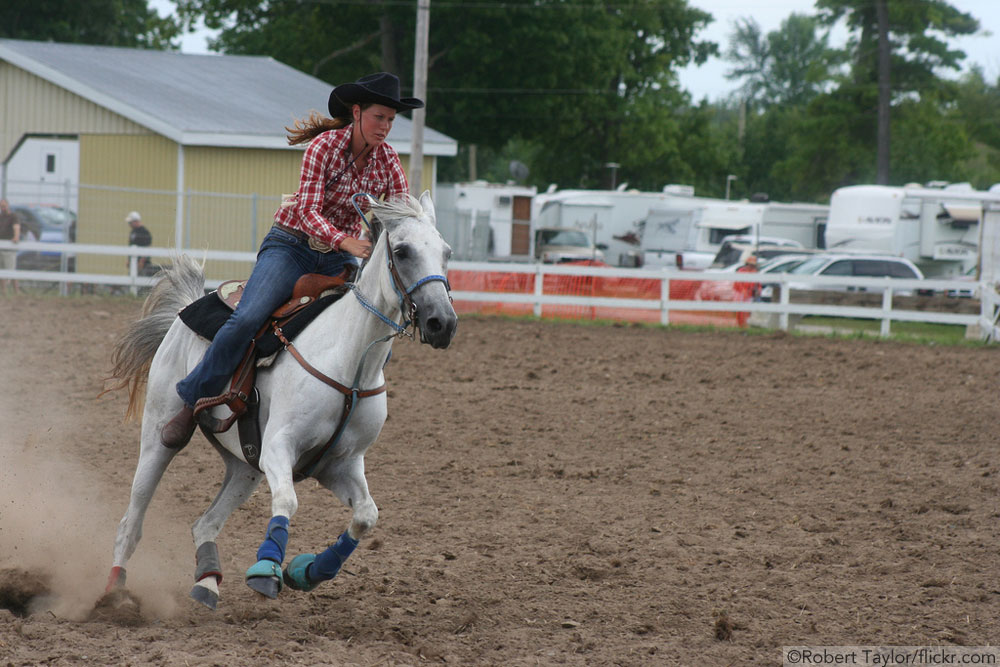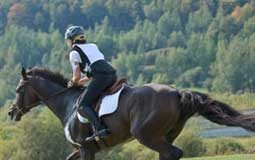Warming up
You can prepare your horse for timed events without practicing at a fast pace. Tempering the tempo will preserve your games’ horse’s soundness, sanity, and extend the longevity of his career. Instead, give your horse the tools he needs – flexibility, cardiovascular fitness, strength, balance, and a calm confident disposition –to race at peak performance when he enters the ring. Begin each session with a 5-10 warm up on a loose rein at the walk. This will start the warm up process and make a peaceful entrance into the arena a habit. Next pick up an easy jog. Take several laps in each direction of the ring on a loose rein at a pace your horse naturally settles into. After the jog take a break at the walk or move on to a relaxed lope depending on your horse’s condition. Ride with as loose a rein as is comfortable for you and your horse, lessening the demands on his body until his warm up is complete.
Extended Gaits
Extended gaits are ideal for elongating muscles and increasing suppleness. Ask your horse to give you the full reach of his stride for several laps around the ring at the trot and lope – the number of laps being determined by his current level of fitness. While the extended lope/hand gallop increase his reach from his shoulders and hips and compliment your horse’s overall condition, long-trotting is the best choice for improving cardiovascular fitness. It is dynamic enough to get your horse’s heart rate up with less physical wear and tear.
Building Strength for Better Turns
Your horse also needs to be able to get in and out of turns quickly. Collected work is a great way to develop the hind end and core strength he needs for rapid acceleration/deceleration without the stress and strain of speed. Riding in a gentle bit such as a snaffle, hold your reins in softly open fingers and shorten them until you establish light and steady contact with your horse’s mouth. If your horse may wants to slow down when he feels this pressure use your legs encourage him to move forward at a steady pace. When he responds correctly his weight will shift onto his rear end (engaging his hindquarters) and his back will lift (tightening his abdominals) giving you a smoother and crisper gait.
When you practice patterns, ride them at a relaxed and steady pace. Focus on precision, balance, and alternate between extended and collected gaits. Add circles, serpentines, and changes of direction to further enhance your horse’s athleticism, agility, and stride.
Dale Rudin is a CHA-certified riding instructor and clinician with a mindful and balanced approach to horsemanship and riding.
www.un-naturalhorsemanship.com.







great info
Practice, practice practice….and then practice more, but be sure to do other things with your horse, not just make them work.